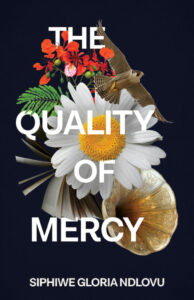
The Rules of the Game: How Genre Can Illuminate Theme
Siphiwe Gloria Ndlovu on Crafting and Subverting Colonial and Postcolonial Narratives
Writing literary fiction is a freeing thing—there are no rules, there is just a story waiting to be told. When I started writing my first novel, The Theory of Flight, I knew that I wanted it be a character-driven story that explored difficult social and political terrain in order to reveal something about the human condition. I also knew I wanted the novel, whose events primarily span the war and post-war period (1970s to 1990s), to reflect how wonderfully stories were told during that time in Zimbabwe.
One such wonderful story took place in the Bulawayo of my youth. In the 1980s The Chronicle, Bulawayo’s primary newspaper, started reporting stories about a woman named Jane who was, to use the parlance of the time, a lady of the night. The stories reported that she would hitch a ride from a lonely but kind man who, for whatever reason, found himself driving around at night, and who, come the following morning, invariably found himself divested of his money and clothes, cold and alone in a cemetery with no memory of how he came to be there, but remembering that there had been a woman called Jane who was now nowhere in sight.
Sometimes showing a thing as what it really is, with no embellishments, reveals the very thingness of the thing.
Jane, as you may have guessed, was a ghost. I have since come to learn that ghost women like Jane travel through various countries at particular moments in those countries’ histories. Why did Jane the Ghost visit Bulawayo, Zimbabwe during our post-war period, who were these men who kept on coming forward with stories of how this woman had waylaid and duped them; why did The Chronicle report her story with such fidelity?
It would have been easy to write off Jane’s story as an urban legend that reflected the anxieties of a society in which gender roles where shifting and re-defining themselves. However, her story also came after a war period where stories proliferated of various nationalists escaping capture by shapeshifting, disappearing into thin air, or causing sudden changes in the weather. In other words, Jane’s story was told after decades of seemingly impossible things being retold as possible things—decades of urban folklore and mythmaking.
In writing The Theory of Flight I wanted to capture this “anything goes” approach to storytelling that was endemic during the country’s war and immediate post-war period. And so I wrote a story that was set in an unnamed country that was very much like Zimbabwe and in which characters, to no one’s surprise, occasionally flew away on giant pairs of silver wings. The story was a critique of the country’s history of violence, but also a celebration of how we, as humans, find creative ways to overcome adversity.
When the book was published in 2018, the general critical consensus seemed to be that I had written a magical realist novel. The label initially made me very uncomfortable. It’s true that I had written a novel in which seemingly fantastical things happened in a realistic setting and, having happened, were never questioned within the world of the story. I had written a novel in which the past was made to reflect on the present and the present on the past all in an attempt to provide a social and political critique In other words, the novel definitely quacked and walked like a magical realist duck.
What made me wary of the label was that I did not think that the Zimbabweans who told the stories of Jane the Ghost or of shapeshifting nationalists would have considered themselves magical realists. What they were doing seemed to be part of a longer storytelling tradition, one that stretched much farther back than the coining of the term “magischer realismus” by Franz Roh in the 1920s—a tradition that made itself comfortable with myth and folklore at times when reality seemed too volatile and needed the imagination to suture the ruptures.
The way that The Theory of Flight was labeled made me think critically about genre—about the various rules of particular genres and what kind of stories they made possible. When I wrote my second novel, The History of Man, I knew I wanted to be very deliberate about the story’s genre. I knew that it could not be a genre in which “anything goes” because the story’s protagonist, Emil Coetzee, a white, colonial civil servant. lived in a world in which truth was objective and only appeared with a capital “T,” where all things were knowable and could be ordered and categorized, where hierarchies and binaries mattered because separation was more important than relation, where there were no gray areas in sight, where everything was in its perfect and immovable place. In other words, a world that did not allow for much magic.
Realism with its faithful and objective representation of reality, its delineation and criticism of social and political injustices and inequalities; its examination of human psychology and interiority; its commitment to non-ornamental language, veracity and verisimilitude—was the best way to peel back the layers of fiction within the colonial narrative. A narrative that presented itself as largely beneficent and benevolent, as establishing order in a chaotic world, as shining the light of knowledge on all the dark corners of the world, when really it was simply a way to establish and entrench white supremacy.
I am now more aware and appreciative of how the elements and rules of a particular genre can help enrich a character-driven story.
In The History of Man I used the purported “objective truth” of the colonial narrative to expose its highly subjective fiction. Adhering to the rules of realism allowed me to accomplish this because sometimes showing a thing as what it really is, with no embellishments, reveals the very thingness of the thing.
Having written one novel, The Theory of Flight, that was a critique of the postcolonial state and another, The History of Man, that was a critique of the colonial state, it occurred to me that a third novel that examined the transition between these two states would illuminate how one bled into another. This was how the idea for The Quality of Mercy was born.
The final novel in the City of Kings trilogy, The Quality of Mercy, did not really have a choice but to be a detective story because it was about the investigation not only of a crime, but, also, the nature of that crime. Was the crime: (a) the violence of colonialism; (b) the injustice of colonialism; (c) the inequality created by colonialism; (d) the continuation of this violence, injustice and inequality in the postcolonial era; or (e) all the above?
The best mystery and detective novels dissect the society in which the crime took place and examine and investigate the events that led to the particularity of the crime with an aim to reveal the larger context. The context in The Quality of Mercy is a country in which the colonial narrative has bifurcated society along racial, gender and ethnic lines that make relation, empathy and understanding difficult, if not impossible. Into this severely segregated world enters Chief Inspector Spokes Moloi, a black man investigating a case that takes him across racial lines for the first time in his career. Like many who have come before him, he encounters a formidable villain, sees red herrings for what they are, and uses his superior intellect and deductive reasoning to lead us to the satisfactory ending that is the mainstay of this genre. In so doing, he holds a mirror up to a society and country embracing independence with so much still unresolved.
While I still consider myself a writer of literary fiction, I am now more aware and appreciative of how the elements and rules of a particular genre can help enrich a character-driven story. Writing the City of Kings trilogy has been an education. Case closed.
__________________________________

The Quality of Mercy by Siphiwe Gloria Ndlovu is available from Catalyst Press.
Siphiwe Gloria Ndlovu
SIPHIWE GLORIA NDLOVU is a Zimbabwean writer, scholar, and filmmaker. She is a 2022 recipient of the Windham-Campbell Prize for Fiction. Her debut novel, The Theory of Flight, won the Sunday Times Barry Ronge Fiction Prize in 2019. Her second and third novels, The History of Man and The Quality of Mercy, were shortlisted for the Sunday Times Fiction Prize. Her new novel, The Creation of Half-Broken People, is now available. After almost two decades of living in North America, Ndlovu has returned home to Bulawayo, the City of Kings.



















